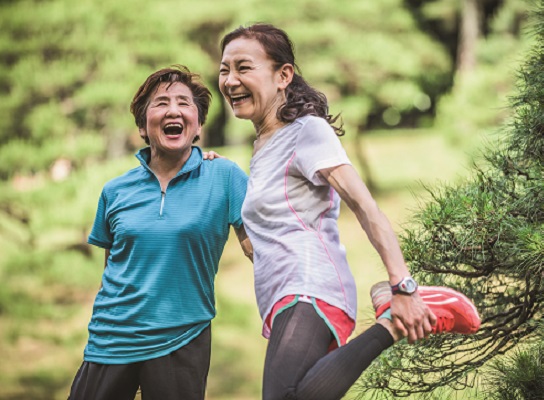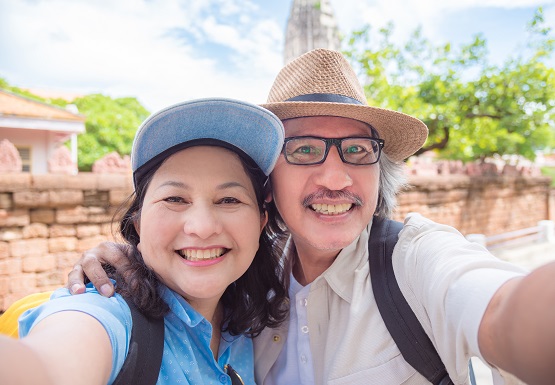Living with Diabetes for Elderly Patients

Not managed well, diabetes is a time bomb. Heart attack, vision loss and kidney failure follow in the wake of its uncontrolled version. The risk amplifies in elderly patients, who often suffer from related diseases like hypertension, and age-related changes that complicate diagnosis. But with the right education and effort, elderly patients can enjoy healthy living even with diabetes.
An unhealthy and devastating trend
The 14th of every November is World Diabetes Day, which seeks to spread awareness about the now-too-prevalent disease. The event is now globally celebrated, hinting the disease has risen to epidemic level. And Singapore is among the nations with the highest incidences of Type 2 Diabetes.
In 2015, the International Diabetes Foundation released a report, revealing 10.53 per cent of people in Singapore aged 20 to 79 are estimated to suffer from diabetes. A local national survey reveals even more harrowing figures for the elderly Singaporeans, showing 29.1 per cent between 60 and 69 years old having it. The same survey also predicts one in two Singaporeans will suffer from it by the age of 70.
Dr Goh Kian Peng, an endocrine specialist in Saint-Julien Clinic for Diabetes and Endocrinology at Mount Alvernia Hospital, agrees with the figures, finding the highest-risk age group to be those aged 45 to 65. Certainly more has to be done to manage the disorder, especially among the elderly patients.
Eyeing for the early and silent complication
Alongside the growing prevalence of diabetes, the global trend for visual impairment is on the rise too, for obvious reasons. One of the foremost complications of diabetes is vision problems, such as retinopathy, glaucoma and cataracts. This is frightening on many fronts. For once, the early stages of vision problem do not cause any visible symptoms, hindering early medical intervention.
It can even plague people with only prediabetes, affecting an estimated eight per cent of them. This means it creeps on them early, staying silent till the vision has lost its sharpness. For elderly patients with natural age-related vision changes, the impact of diabetic eye disease is made more pronounced since vision loss can happen quicker and be more severe. Unsurprisingly, diabetes has surpassed all to be the leading cause of blindness.
Treating diabetes in elderly patients
Treatment options, namely medications like Metformin and insulin injection, and dietary modifications, are similar for patients of all ages, but elderly patients need a little more care.
On this, Dr Goh says, “Many elderly patients have multiple medical problems, and are on numerous medications. This rules out certain diabetic drugs and affects compliance, as they may forget or take the wrong dose. Also, diabetic drugs can be too effective, causing low blood sugar levels. Someone on the low side of sugar can lose his or her balance and fall down, a situation an elderly person cannot afford to be in.”
Another focus is on assessing both “the social and care environment of the elderly patient”. In fact, Dr Goh advocates finding out the main caregiver’s identity, knowledge and habits in caring, and understanding the patient’s expectations and perception towards treatment. This is important to titrating insulin for the patient and conceiving a treatment plan.
Best strategies to prevent diabetes
For a chronic disorder like diabetes, the adage: prevention is better than cure holds much weight. With the right diet and lifestyle, prevention is not all that hard.
According to Dr Goh, the best strategy in the fight against the onset of diabetes comprises three lifestyle changes: Consume more vegetables in your diet and lower intake of food high in simple carbohydrates such as white bread and rice; exercise regularly through brisk walking or cycling; and maintain a healthy weight. Together, they can keep diabetes at bay for a long, long time.
As Christmas approaches, Dr Goh recommends the following healthy food suggestions to go with the celebration: “Eat roasted chicken without the skin, go for organic rocket and young spinach leaves, and consume more avocado slices, pine nuts and raisins. If you’re feeling it, add balsamic vinegar and cold-pressed extra virgin olive oil to a salad bowl and toss lightly.”
This way, your elderly loved ones can enjoy a hearty Christmas meal without feeling too guilty. Just remember to ramp up the frequency of your exercises after the celebration.
Keeping you health-focused
If your elderly loved one has been recently diagnosed with diabetes, it is not the end of the road. On the contrary, it can be a start to living a healthier and more fruitful life. Many patients, after being diagnosed with diabetes, commit to a healthy and active lifestyle. As a result, they improve their overall well-being, feeling more fulfilled and happier. With diabetes, the elderly patients can still travel the world, pursue fun hobbies and interests, and indulge in delicious food, so long as it is done in moderation. Truly, there is light at the end of the tunnel — a life after diabetes.
Six simple tips to better care for elderly patients with diabetes
Dr Goh Kian Peng provides six tips to a caregiver looking after an elderly patient to ensure healthier control of sugar level:
1. Prepare the medication beforehand with a pill box to ensure the patient will take it at the correct time and frequency
2. Do not delay or allow a patient to miss a meal as diabetic medications have to be taken with it
3. Replace the patient’s meal with healthier options can help improve diabetic control
4. Keep a glucometer at home to support diabetes control and check for low blood sugar
5. Regular visits to a doctor can help to preempt diabetic complications
6. Keep the patient physically active through exercises such as a 20-minute brisk walk
Article contributed by Dr Goh Kian Peng, an accredited doctor of Mount Alvernia Hospital.
This article is taken from our My Alvernia Magazine Issue #28. To read more, click here or here.



